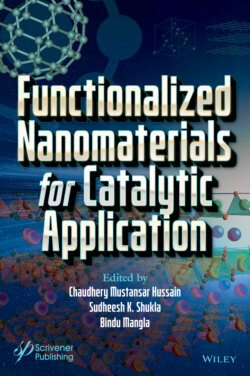Читать книгу Functionalized Nanomaterials for Catalytic Application - Группа авторов - Страница 20
1.5.1 Carbon-Based FNMs as Photocatalysts 1.5.1.1 CNT-Based FNMs
ОглавлениеVan der Waals forces, hydrophobicity, and a very poor solubility lead to agglomeration of the NMs. Sometimes, impurities present deliver a poor degrading efficiency of these materials. Surface alteration successfully resolves the problem faced to get better achievements. Functionalization divided into two main segments (1) covalent and (2) noncovalent alters the photocatalytic deliverables when dissimilar functional modules are associated with it. Rh B, an OP, was photocatalytically degraded using visible (>420 nm) light, by the heterostructure Au NPs @ POM-CNTs at room temperature. This tricomponent had 45% degradability [129]. In one of their trials, the authors Xu, Y. et al. witnessed that 0.1% of CNT/LaVO4 FNM could effectively photocatalytically degrade TC (81%) antibiotic that caused harmful effects to water segments [130].
In a similar manner, ZnO/NiO coated MWCNTs photocatalytically degraded (azo dye) MO efficiently, where a comparative study was done by the authors at different combinations of the trio component, at pH 7, for 6 h, using UV (280 nm) and visible radiation (480 nm) [131]. Exposure of hydrothermally formed TiO2-NRs/CNTs/braced with FeCo-Al2O3 catalytic agent was a potent remover of MB (97.5%), when the medium was photocatalytically degraded by natural sunlight, was later proved for its sustainability up to six trials with lesser doses in kinetic runs [132]. In a different situation, functionalized MWCNTs/TiO2 got by sol-gel method as per the reporters of El-Sayed, B.A. et al. had a versatile photocatalytic decomposition under variable conditions of sunlight, UV, and Xenon light-irradiation. Later, these were proven for their activity over the textile dye effluents Vat Green dyes and Dianix Blue dye in different trial runs [133].
